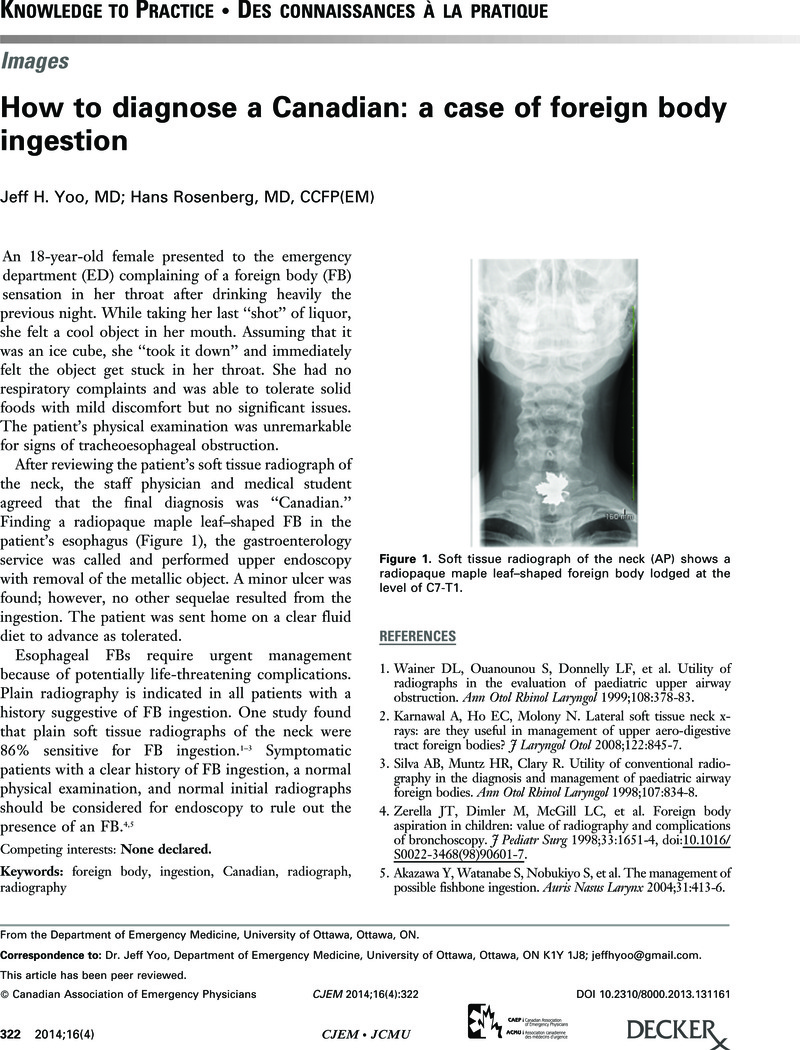No CrossRef data available.
Article contents
How to diagnose a Canadian: a case of foreign body ingestion
Published online by Cambridge University Press: 04 March 2015
Abstract
An abstract is not available for this content so a preview has been provided. As you have access to this content, a full PDF is available via the ‘Save PDF’ action button.

- Type
- Knowledge To Practice • Des connaissances à la pratique
- Information
- Copyright
- Copyright © Canadian Association of Emergency Physicians 2014
References
REFERENCES
1.
Wainer, DL, Ouanounou, S, Donnelly, LF, et al. Utility of radiographs in the evaluation of paediatric upper airway obstruction. Ann Otol Rhinol Laryngol
1999;108:378–83.Google Scholar
2.
Karnawal, A, Ho, EC, Molony, N.
Lateral soft tissue neck xrays: are they useful in management of upper aero-digestive tract foreign bodies?
J Laryngol Otol
2008;122:845–7.Google Scholar
3.
Silva, AB, Muntz, HR, Clary, R.
Utility of conventional radiography in the diagnosis and management of paediatric airway foreign bodies. Ann Otol Rhinol Laryngol
1998;107:834–8.CrossRefGoogle ScholarPubMed
4.
Zerella, JT, Dimler, M, McGill, LC, et al. Foreign body aspiration in children: value of radiography and complications of bronchoscopy. J Pediatr Surg
1998;33:1651–4, doi:10.1016/S0022-3468(98)90601-7.Google Scholar
5.
Akazawa, Y, Watanabe, S, Nobukiyo, S, et al. The management of possible fishbone ingestion. Auris Nasus Larynx
2004;31:413–6.Google Scholar




